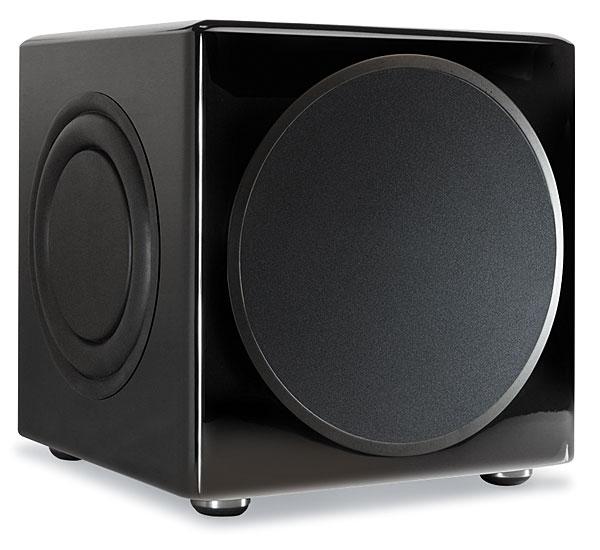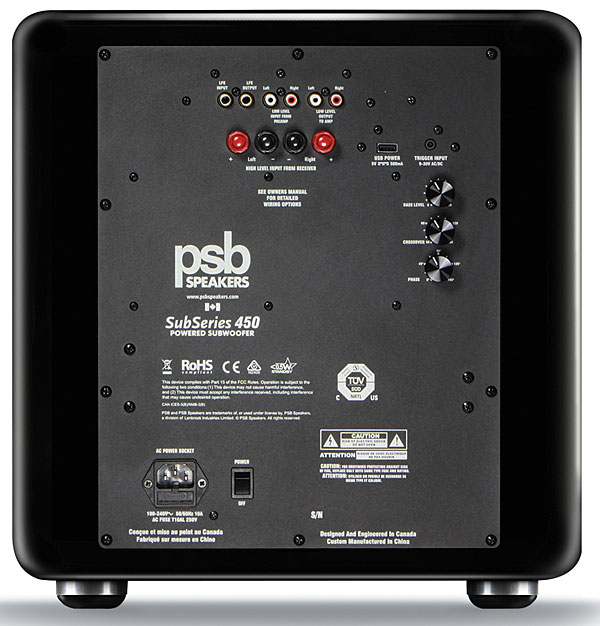PSB SubSeries 450 Subwoofer Review

AT A GLANCE
Plus
Very powerful on music
Outstanding build quality
Small size
Minus
Tepid output at the very bottom
THE VERDICT
One of the most musical subwoofers I’ve ever auditioned, and it’s damn pretty, too!
Founded in 1972 in Ontario, PSB Speakers has grown from one man’s passion for audio into an international speaker company with more than 50 distributors and approximately 1,000 dealers. Paul Barton got his start in audio when he was just 11 years old, making speakers with his father. As he became more confident with his designs when he was in high school, he started to sell his speakers to college students at the nearby University of Waterloo. From the beginning, Barton’s goal was to create high-performance, highvalue loudspeakers for music and, eventually, for home cinema applications.
Two years after he launched PSB, Barton began a relationship with Canada’s National Research Council (NRC), which continues to this day. Through the NRC’s work in psychoacoustics and PSB’s use of what is now a renowned anechoic chamber, PSB has been able to refine their designs. Other manufacturers have since jumped on the bandwagon, and some have even modeled their own anechoic chambers after the NRC’s. But PSB was an early pioneer in this type of speaker development, and it’s a hallmark of Barton’s passion and desire to always provide a better-sounding product.
Over the years, I’ve heard various demos of PSB models, but I’ve never auditioned any in my own system. When PSB’s latest subwoofer, the SubSeries 450, arrived on my doorstep, I was definitely curious to see if this successful manufacturer of full-range speakers could compete in the subwoofer arena with highly regarded internet-direct companies.
I currently use two beasts from such companies: an SVS PC-Ultra cylinder and a Hsu Research VTF-15H MK2, located in the front left corner and midway along the right wall, respectively, in my room. Let’s see how the PSB fared against these big boys.
Design and Build
At 45 pounds, the SubSeries 450 doesn’t come close to being the heaviest subwoofer I’ve had to unpack and maneuver around my theater, but it may be the best-looking one. In lieu of the traditional Borg Cube design, it has elegant rounded corners and a paint job that Enzo Ferrari would be proud to have on one of his sports cars. The gloss black enclosure exudes class, with only one downfall: It’s a dust magnet! Much like a black Ferrari, it always looks best after a car wash (or, in this case, a dusting), but once the dust settles a few hours later, it loses a bit of its shine.
Looks aside, the design features are quite impressive, including a 12-inch front-facing polypropylene cone woofer (with a thick rubber surround), a 2.75-inch voice coil, and a 75-ounce magnet. In addition to the main woofer, there are two 10-inch passive radiators, one on each side.

The sub’s NAD-designed Class D amplifier claims continuous power of 400 watts and dynamic peak power of 1,000 watts. On the rear panel, the controls and jacks are well spaced, making it easy for thick fingers to navigate them. These include knobs for volume, crossover, and phase, along with a line-level LFE input/output, stereo high-level speaker inputs/outputs with five-way gold binding posts, stereo low-level inputs/outputs, a 5-volt USB outlet, a 3.5mm trigger in, a power switch, and a socket for the detachable power cord.
If you’re using the LFE input (as I did), the crossover in the sub is disabled and will rely on the setting in your processor (80 hertz, in my case). If you’re using the sub in a dedicated 2.1-channel setup, you can adjust the crossover manually to blend with your main speakers.
Music to My Ears
Given the 450’s relatively lightweight design and small form factor, I started by placing it at my main listening position and performing a sub crawl around the room while listening to Joss Stone’s “Sleep Like a Child,” in order to determine the best location. The tightest and most prolific bass response came from just short of halfway along the right wall, in a near-field position to the money seat. Fortunately, I already had a subwoofer output cable from my pre/pro running to that location, since that’s what my Hsu calls home.
I fully expected this sub to shine with music—and it exceeded those high expectations. Running through a sampling of tracks from various genres (rap, pop, country, classical), I was nothing but impressed by its performance with everything I threw at it. The bass hit hard and tight and never lingered in the room longer than it should have. In this regard, the 450 bested my two reference subs, with extremely strong presence in the bottom of the bass guitar’s range and maybe a bit below, yet it never overpowered my main speakers.




























































